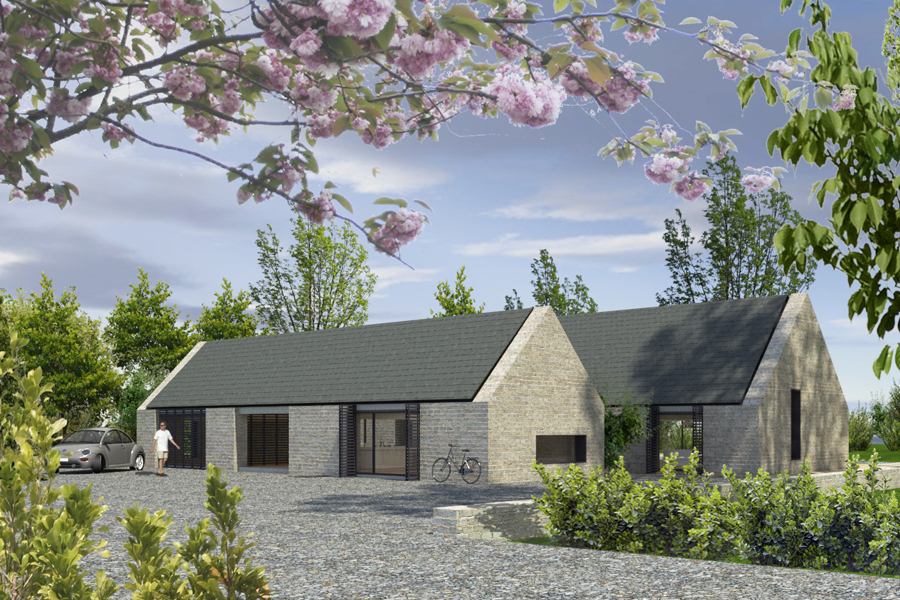7. Villa Enschede
wv-studio

Varianten
| Woningtype | Afm. (b x l x h) in m | BVO in m2 | Inhoud in m3 | EPC | Prijs |
|---|---|---|---|---|---|
| vrijstaand | 12,0 x 18,0 x 7,0 | 320,0 | 1150,0 | 0,2 | € 480.000 |
Omschrijving
't Vaneker is a development area for single family homes just north of the city of Enschede in the Netherlands. We proposed a design for both the masterplan and the individual villas. Rather than positioning villas in rows along the main roads through this area we first analysed the historical landscape to find clues that we could use as the starting point for our design. We found these in the existing footpaths that dated back centuries. These footpaths were partially still used, others neglected and partially overgrown. The main roads as proposed by the planners will still be used by car traffic, but the network of old footpaths would be reinstated to form the main access for pedestrians and cyclists. The villas are grouped in little hamlets along these footpaths. This network connects all settlements throughout the whole of the countryside creating a new “social network”. Each hamlet will have its own guidelines for materials, building height and volume. This will give each hamlet its own identity. These guidelines may require very big villas to be broken-up in multiple volumes to make sure all villas in one hamlet are of a similar scale. The villa shown consists of 2 main volumes. When approaching the villa, the first building volume contains garage and kitchen. An opening in the first building volume forms a covered external space allowing access to the front door in the second building volume. The material palette for the villa is limited to 6 materials: wood for the floor and roof structure, brick for the external walls, concrete for external paving and lintels, wrought iron for external shutters and gates, slate for the roof covering and white plaster for walls of all internal volumes. The two main volumes are positioned alongside each other with two connecting 'see-throughs' perpendicular to these volumes; one creates the main access, the other connects the kitchen to the living room. The ground floor allows space for entrance, study, storage, lounge, dining area, kitchen and a detached garage. The bedrooms, bathroom and storage on the first floor are visually separated from the external walls. From any position on the ground floor the brickwork of the external walls, the wooden roof structure and the white plaster volumes of the first floor are visible.




